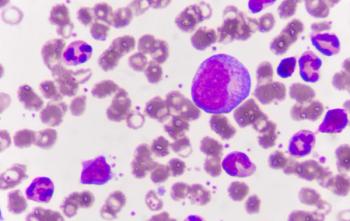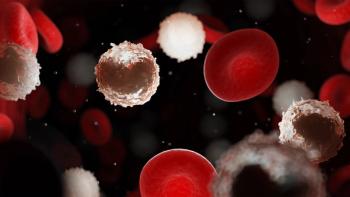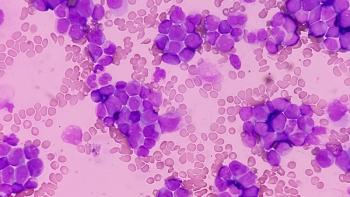
Similar Complication Rates, PFS With HIPEC in Stage III and IV Ovarian Cancer
Patients with FIGO stage IV ovarian cancer did not experience additional complications or worse survival with HIPEC compared with those with stage III disease.
Patients with International Federation of Gynecology and Obstetrics (FIGO) stage IV ovarian cancer treated with hyperthermic intraperitoneal chemotherapy (HIPEC) after neoadjuvant chemotherapy and interval debulking surgery did not experience additional complications or worse survival outcomes, compared with those with stage III disease, according to an institutional prospective analysis published in Annals of Surgical Oncology.1
Findings showed that among all evaluable patients, irrespective of FIGO stage (n = 205), the rate of grade 3 to grade 5 postoperative complications within 30 days from surgery was 11.2%. These rates were 14.0% for patients with FIGO stage III disease (n = 129) and 5.3% for those with FIGO stage IV disease (n = 76); however, the difference was not statistically significant (P = .052). A multivariable analysis also confirmed this difference (odds ratio, 0.24; 95% CI, 0.07-0.80; P = .02).
Furthermore, at a median follow-up of 24 months (IQR, 14-34), the median progression-free survival (PFS) for the overall population was 24.0 months (95% CI, 17.8-30.2), and the 2-year PFS rate was 47.1% (95% CI, 38.7%-55.5%).
Notably, no substantial difference in PFS was reported between patients with stage III disease and those with stage IV disease (PP = .44). The median PFS was 23 months (95% CI, 16.1-29.9) and 24 months (95% CI, 14.5-33.5), respectively. There was also no difference in PFS between patients who received 3 or 4 cycles of neoadjuvant chemotherapy and those given more than 4 cycles, where the median PFS was 24 months (95% CI, 18.5-29.5) and 24 months (95% CI, 17.4-30.6), respectively ( = .85).
“In relation to the demonstrated absence of additional perioperative complications and possible positive survival outcomes, with this study we offer a background to consider the use of HIPEC with cisplatin 100 mg/m2 in selected [patients with] FIGO stage IV [disease] and women receiving up to 6 cycles of neoadjuvant chemotherapy,” lead study author Valentina Ghirardi, MD, of Fondazione Policlinico Universitario Agostino Gemelli IRCCS, and colleagues wrote.
HIPEC is currently listed in the National Comprehensive Cancer Network guidelines as a treatment option for patients with ovarian cancer only in the case of interval debulking surgery.
The final analysis of the phase 3 OVHIPEC-1 trial (NCT00426257) showed that HIPEC following interval cytoreductive surgery elicited an improvement in PFS vs surgery alone in patients with stage III epithelial ovarian cancer who were not eligible for primary cytoreduction. Patients in this study also received at least 3 cycles of neoadjuvant chemotherapy.2
Study authors noted that HIPEC at the time of interval debulking surgery has been standard practice at Fondazione Policlinico Universitario Agostino Gemelli IRCCS since the initial publication of OVHIPEC-1 data in 2018. However, they noted survival data appeared to be limited to patients with FIGO stage III disease who received 3 cycles of neoadjuvant chemotherapy.1
This analysis was designed to assess the use of HIPEC in patients who had FIGO stage IV disease and/or received up to 6 cycles of neoadjuvant chemotherapy.
Investigators prospectively pulled data on patients who underwent interval debulking surgery and HIPEC at Fondazione Policlinico Universitario Agostino Gemelli IRCCS from January 1, 2019, to July 31, 2022. The analysis included patients with FIGO stage III or IV ovarian cancer previously treated with up to 6 cycles of neoadjuvant chemotherapy. Patients needed to be at least 18 years of age and under 75 years of age; have a body mass index of no more than 35 kg/m2; have a preoperative American Society of Anesthesiologists score of 2 or less; and residual disease of less than 2.5 mm.
Patients with stage IV disease were required to have a complete response in parenchymal and distant metastases; and residual parenchymal/distant disease that was amenable to surgical resection or stereotactic body radiation therapy.
Key exclusion criteria for all patients consisted of uncontrolled chronic hypertension; uncontrolled diabetes; systemic autoimmune disease; moderate-to-severe chronic kidney failure; and a preoperative white cell count of less than 3000/m3 and platelet count of less than 80,000/μL. Enrollment in other clinical trials was not permitted.
During the period of the study, 546 patients underwent interval debulking surgery. Notably, 341 patients met exclusion criteria and did not receive HIPEC. Among patients who did receive HIPEC, 161 were given 3 or 4 cycles of neoadjuvant chemotherapy, and 44 patients received more than 4 cycles. Additionally, 106 patients had FIGO stage III disease and underwent 3 or 4 cycles of neoadjuvant chemotherapy; 55 patients had FIGO stage IV disease and were given 3 or 4 cycles of neoadjuvant chemotherapy. Twenty-three had stage III disease and received more than 4 cycles of neoadjuvant chemotherapy, and 21 patients had stage IV disease and were treated with more than 4 cycles.
Most patients (81.9%) underwent maintenance therapy. The use of maintenance bevacizumab (Avastin) was higher in patients who received more than 4 cycles of neoadjuvant chemotherapy (45.5%) vs those given 3 or 4 cycles (24.8%; P = .008); conversely, patients given 3 or 4 cycles were more likely to receive a PARP inhibitor as maintenance (57.1%) vs those given more than 4 cycles of neoadjuvant treatment (38.6%; P = .03).
Study authors noted that no difference was found in baseline characteristics between the FIGO stage III and IV cohorts. Notably, the rates of stable disease after neoadjuvant chemotherapy (11.4% vs 1.9%; P = .004), mean surgical complexity score at interval debulking surgery (47.7% vs 27.3%; P = .001), and bowel resection rate (small bowel, 6.8% vs 3.1%; large bowel, 40.9% vs 29.2%; P = .046) were higher in patients undergoing delayed interval debulking.
Additional data showed that the difference in the rate of grade 3 to 5 postoperative complication rates at 30 days between the patients given 3 or 4 cycles of neoadjuvant chemotherapy (8.7%) and those treated with more than 4 cycles (18.2%) did not reach statistical significance (P = .07).
A univariate analysis of risk factors for postoperative complications demonstrated that patients who underwent any bowel resection had an increased risk of any-grade adverse effects (AEs; OR, 3.54; 95% CI, 1.89-6.63; P < .001) and grade 3 to 5 AEs (OR, 5.63; 95% CI, 1.99-15.97; P < .001). Notably, a low or medium complexity score was associated with increased protection from any-grade postoperative complications (OR, 0.20; 95% CI, 0.09-0.44; P < .001) and severe postoperative complications (OR, 0.27; 95% CI, 0.10-0.75; P = .012).
Study authors noted that analysis was limited by the inclusion timeframe and short follow-up, preventing an overall survival analysis.
“A further step on this subject could be represented by the prospective evaluation of HIPEC efficacy in relation to tumor’s molecular pattern together with its potential synergistic effect with currently available target therapies for [patients with] advanced ovarian cancer,” study authors concluded.
References
- Ghirardi V, Trozzi R, Scanu FR, et al. Expanding the use of HIPEC in ovarian cancer at time of interval debulking surgery to FIGO stage IV and after 6 cycles of neoadjuvant chemotherapy: a prospective analysis on perioperative and oncologic outcomes. Ann Surg Oncol. Published online February 27, 2024. doi:10.1245/s10434-024-15042-0
- Aronson SL, Lopez-Yurda M, Koole SN, et al. Cytoreductive surgery with or without hyperthermic intraperitoneal chemotherapy in patients with advanced ovarian cancer (OVHIPEC-1): final survival analysis of a randomised, controlled, phase 3 trial. Lancet Oncol. 2023;24(10):1109-1118. doi:10.1016/S1470-2045(23)00396-0
Newsletter
Knowledge is power. Don’t miss the most recent breakthroughs in cancer care.
















































































